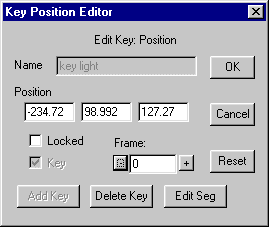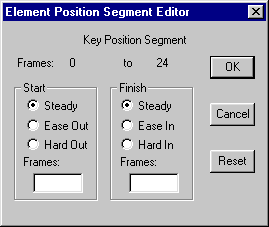Kinds of Controllers
|
There are several kinds of controllers.
Each uses a different kind of data, or computes in-between values in a different
manner, depending on the needs of the property that is animating.
|
Float
|
This
is a ordinary number like 10.5 or -150. Like most controllers, in-between
values are smoothly interpreted.
|
Point3
|
Point3s
return 3 numbers per frame. Each value is smoothly interpreted without regards
to the others. You use these for positions and RGB colors.
|
Orientation
|
An orientation
controller returns a rotation per frame. They can set the orientation of an
object or can be used for a rotational direction. When you edit these values
in a dialog you see the PYR (pitch, yaw, roll) equivalent to the orientation.
|
|
Orientation
is more complex that it may seem. Interpreting angles smoothly will not result
in smooth rotation of your models. The order in which pitch, yaw and roll
are applied is also important. Anim8or uses PYR because by applying roll last
you can set it to 0 and you elements will stay "upright".
|
|
It's
often easier for you to just ignore the numeric values for orientation. Simply
orient things on the screen and leave the rest to the computer.
|
Boolean
|
Boolean
controllers return a "yes" or "no" value. You would use one for and object's
visibility if you wanted it to suddenly disappear. There is no "maybe" value
for a Boolean.
|


